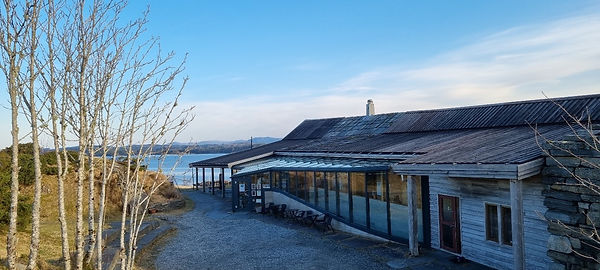In-person meeting in Nordhordland BR, March 2024
March 2024
As CULTIVATE enters its final year, the project held its third in-person meeting in Nordhordland Biosphere Reserve in Western Norway. The region is normally characterized by harsh weather this time of year, but during the partner meeting it was on its best behaviour with sunny skies and next to no wind or precipitation.

The meeting started with a boat ride from the county’s capital Bergen to the Lygra peninsula, located in Alver municipality which is the largest municipality of the biosphere reserve. Here, meetings were held at the Heathland Centre for the day, and there was also time for an afternoon stroll in the historic heathlands, guided by Norwegian project leader Inger Måren, who did her PhD work here.

The meeting started with a boat ride from the county’s capital Bergen to the Lygra peninsula, located in Alver municipality which is the largest municipality of the biosphere reserve. Here, meetings were held at the Heathland Centre for the day, and there was also time for an afternoon stroll in the historic heathlands, guided by Norwegian project leader Inger Måren, who did her PhD work here.
When the meetings at the Heathland Centre ended for the day, the partners travelled to Kilstraumen Brygge in Austrheim municipality. This is a historical inn, which has offered docking, food, and accommodations as far back as 1610. Today it is a nice place for locals to gather, and with its restaurant and pub it is a popular place for local events. Project meetings were held here over the following two days.

On the final day in Nordhordland, partners made an excursion to the island of Fedje. This is the smallest municipality in the biosphere reserve, and it has approximately 560 inhabitants. The group met with the self-proclaimed “gatherer of Fedje”, Jostein Husa, who cooks both traditional and modern food, mainly using locally sourced ingredients. Jostein and his wife Linda invited us into their home, where they served us a delicious three course lunch - a lot of it based on freshly caught herring. After lunch, we got to see their old, traditional boat house before they took us on a walk in the landscapes of Fedje. These lands are managed by grazing “wild sheep” – an old robust breed that graze outdoor all year round – and traditional heath burning. The landscape also shows sign of peat removal. Historically there were no trees growing on the island, and peat was the main source of energy until electricity arrived there in 1955.
During this in-person meeting, partners worked on gathering up the loose ends of existing data that are in the process of being turned into scientific papers, as well as making plans for data that are still being collected using the “Seeds of Good Anthopocenes” methodology.

As all the partners finalize their work in the project, the Scottish team are starting to prepare for a final meeting in Wester Ross Biosphere Reserve towards the end of the year – also hosting a cultural heritage forum for policymakers and other key stakeholders.
